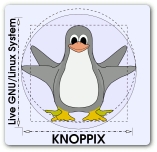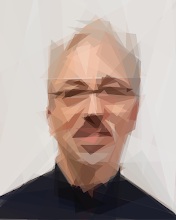I've just learned about this site. It contains interesting information about almost everything on the course. I'm not sure how good the book is but, never reject any extra help.
I recomend you to read and understand the goals of Lab #5 before going to the Lab. It might be more complicated that previous ones . You might need all session's time to complete the proposed exercises.
Assignment #2 is out
It can be obtained from here and it is due by January, 27th.
Please remember there are just a few days left to turn in assignment #1 (due by Dec, 13th).
Web-based nslookup
Easier than the nslookup command-line tool and independent of your operating system, this site gives you answers to any of your DNS records curiosity.
One example of securing POP3 with SSL

This example comes from Google's Gmail POP configuration.
Note the checked "Use secure connection (SSL)" on the left image (you will need to click on it to make it readable).
With it, any eavesdropper will see just random bytes instead of a nicely crafted ASCII dialog. So capturing username and password or the nature of the exchanged messages is now quite difficult.
Spanish Research Network Infrastructure
 This one is the network UPV is connected to. As you can see (click on the image for a better view) Valencia is connected using several 2.5Gbps channels: Not bad!!
This one is the network UPV is connected to. As you can see (click on the image for a better view) Valencia is connected using several 2.5Gbps channels: Not bad!!
MIME and Transfer-Encoding
Common encoding schemes used by MIME include base64 and quoted-printable. Please note the goal here is to keep the text transmitted using SMTP protocol as 7-bit ASCII code regardless the original message contents. This transfer encoding will be undone on the receiving end to restore the original message. This way, images, sounds and any other binary contents can be sent as SMTP email.
Java Sockets Source Code
I've posted some of the Java source code we used in the classroom lately.
As we mentioned in the class, the conversion between bytes and characters depends on the encoding scheme. Most current Operating Systems no longer use ASCII but other schemes like UTF-8 to encode text-file contents. That is why we prefer the use of *Reader and *Writer classes instead of just the byte streams. (Why is encoding important?).
As we mentioned in the class, the conversion between bytes and characters depends on the encoding scheme. Most current Operating Systems no longer use ASCII but other schemes like UTF-8 to encode text-file contents. That is why we prefer the use of *Reader and *Writer classes instead of just the byte streams. (Why is encoding important?).
Java Sockets' Programming
 Now you might want to download the JDK to your system so you can compile your own Java code. I know some of you have used other tools, like BlueJ, but the JDK is the real deal and the full class-library docs are here.
Now you might want to download the JDK to your system so you can compile your own Java code. I know some of you have used other tools, like BlueJ, but the JDK is the real deal and the full class-library docs are here.
HTTP result codes
Detailed list of HTTP result codes. But if you need any more detail you can check the current up to date RFC-2616. Please note that Postscript or PDF versions of the document are available in the same page in case you do not feel comfortable with the ASCII-only version.
First assignment is out
You may want to wait some days before starting to work on it as some topics have yet to covered in the lectures. But your first assignment is available. I want you to remember these are optional exercises you may or may not do. But if you do the assignment right (right meaning that it works), then you get a 0.45 points per assignment to be added to your final mark. If you are in doubt of what that means I suggest you to check the assessment details presented on chapter 0 slides.
I do not want to repartition my PC hard drive

You've noticed by now that our lab exercises are mostly Linux-based. This is for a reason: All the software we use at the lab is freely available. But it is very likely you have a Windows-only PC. Fear no more, you may use Knoppix (fantastic Linux distribution that boots up from a CD or DVD). It contains all that you need to complete most of the exercises without installing anything on your PC, just boot the system off the CD media. You can download the latest version from this FTP. As it is an on-campus mirror you should expect ultra-fast download. Just burn the ISO and that's all. You'll find a complete desktop, development tools, Java-support, audio and video players, and some games too. And you can't beat the price. Feel free to share it.
Having fun with the network
This applet shows propagation and transmission delays using animation.
This other applet shows queueing delay and packet loss at a network router.
Message segmentation is shown in this applet.
Some network uses are not fun anymore.
This other applet shows queueing delay and packet loss at a network router.
Message segmentation is shown in this applet.
Some network uses are not fun anymore.
Computer Networks' Lab is ready
Next Monday October 24th first Lab session will be held at the Computer Networks Lab (2nd Floor). Because of our delayed start, Lab exercise number one is skipped and we will start with exercise number two. Text of Lab exercises will be available on the Problems and Exercises book (still being printed). For the time being, you can find Lab exercises one and two in here.
Welcome to Computer Networks 5662
This course will focus on the main topics of communication architecture and some common communication protocols, mostly biased to TCP/IP protocol stack.
Assessment will include class attendance, lab work, optional programming micro-projects and, of course, two exams. Detailed information will be provided in the first class, so do not miss it.
This year I will experiment with this blog-oriented format for the subject's website. Course syllabus is available here.
We will use Kurose's slide set you can download either from the book's companion website or from our site.
Assessment will include class attendance, lab work, optional programming micro-projects and, of course, two exams. Detailed information will be provided in the first class, so do not miss it.
This year I will experiment with this blog-oriented format for the subject's website. Course syllabus is available here.
We will use Kurose's slide set you can download either from the book's companion website or from our site.
Subscribe to:
Posts (Atom)



